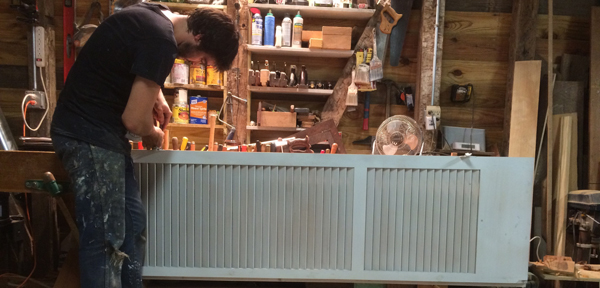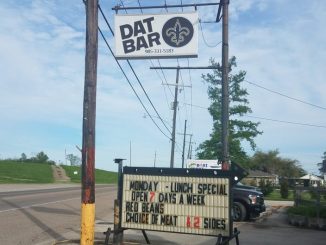
Shutters from 1890 cypress will soon be erected
When Austin Vicknair displayed newly completed shutters for Destrehan Plantation, he was holding the equivalent of a history book.
Vicknair, as the plantation’s period restoration carpenter, made them from cypress milled 127 years ago. The wood came from an 1890 house salvaged in St. Rose and donated to the plantation two years ago. Some of the lumber has been used in a couple of earlier projects and most recently the framework was re-purposed into shutters.
“We try to stick to period-accurate work where we can,” he said of the historical site in Destrehan.
When the shutters are added to the main building, they won’t be replacing the originals, according to Vicknair.Destrehan Plantation was completed in 1790, but around 1840 it was completely remodeled to its current Brick Revival style. And these shutters, he said, fit that style, as well as were built with techniques from that time. Vicknair employed joinery used in the 18th century, which means no glue or nails were used in their construction.
“It’s just wood holding itself. It’s mortise and tenon,” he said. “It operates as it would in nature so it’ll hold up well to the weather here.”
The technique has been used for thousands of years by woodworkers throughout the world by joining pieces of wood into a simple, but durable form with wooden pegs and wooden wedges.
Nancy Robert, executive director of the River Road Historical Society that manages the plantation and site, said the shutters were made with same method of woodworking used by enslaved master builder Charles Paquet, who built the plantation in 1787.
They are part of an overall upgrade project that started earlier this year at the plantation.
“For years, we’d been repairing them because it was such a big project, but we’re doing some work on the main part of the house, including the shutters,” Robert said.
The work was delayed because replacing old shutters is time consuming because they were built with inexact measurements and each pair had to be individually measured and made to those specifications, she said.
While the shutters have been completed, they won’t be erected until paint work is done on two cisterns on the estate. Robert said the work is underway.
Robert emphasized the shutters aren’t just decoration, but also serve as protection for the house.
“We’ve got regular glass window panes and we have to secure the house,” she said. “We have French doors and those are locked and that secures the plantation.”
The plantation is a nonprofit that accepts historical buildings up and down River Road. One of them was the St. Rose house, which was donated and disassembled a couple of years ago, she said. The plantation office came from the Troxler house that was relocated to the plantation site, and the bridal suite (also a bed and breakfast cottage) was re-purposed from a building in Nine-Mile Point in Jefferson Parish. A little building, once the meeting place of the Bethlehem Benevolent Society, is the second bed and breakfast on the site.
For Vicknair, the project is the natural progression of his having spent his childhood at the site helping his father, who worked there in the same job during the early 1990s. The younger Vicknair has worked there fulltime in the last five years.
“At age 13, I remember working here so I’ve been since I’ve been a kid … so I’ve been working here quite a while,” he said.
He’s part of a four-member crew who is basically the Vicknair family, with two of them from Norco and two from Kenner, brought in to advance the plantation’s master plan for development. They built Landry’s office and the bed and breakfast cottages.
Robert added of the work, “We think we’ve done a great job.”




Be the first to comment